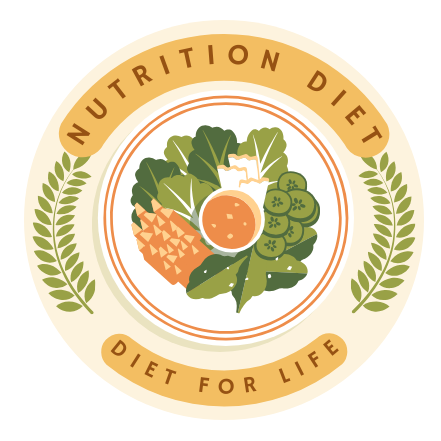Food fortification is one of the most important and cost-effective public health interventions for combating malnutrition and micronutrient deficiencies worldwide. Malnutrition is a global crisis that affects billions of people, with a disproportionate impact on children, pregnant women, the elderly, and people in low- and middle-income countries. Despite advances in medical science and public health, deficiencies in essential vitamins and minerals remain widespread and continue to contribute to poor health outcomes, impaired development, and premature mortality.
Micronutrient deficiencies, often referred to as “hidden hunger,” are a form of malnutrition that affects the body’s ability to perform essential biological functions. These deficiencies, while not always immediately visible, result in long-term, often irreversible consequences for individuals and societies. They can impair cognitive development, reduce immunity, lead to birth defects, stunt growth, and hinder physical and mental well-being. The most common micronutrient deficiencies include vitamin A, iron, iodine, zinc, and folate.
One of the most effective solutions for addressing these deficiencies is food fortification. By adding vitamins and minerals to commonly consumed foods, fortification has the potential to improve the nutritional status of entire populations, particularly those at risk. Food fortification can be applied to a variety of food products and can target both individual micronutrient deficiencies and broader health goals.
This article explores food fortification in detail, including its benefits, challenges, types of fortification programs, and real-world case studies from around the globe. It also discusses the critical role food fortification plays in promoting public health and offers insights into how fortification can be scaled up to reach even more vulnerable populations.
The Scope of Micronutrient Deficiencies
Micronutrient deficiencies are responsible for a wide range of health problems that affect millions of people around the world. According to the World Health Organization (WHO), more than two billion people suffer from deficiencies in essential vitamins and minerals. These deficiencies have serious consequences for public health, including:
- Vitamin A Deficiency (VAD): Vitamin A deficiency is one of the leading causes of preventable childhood blindness and also weakens the immune system, making individuals more susceptible to infections. VAD is particularly common in low-income countries, where diets often lack sufficient sources of this essential nutrient, such as fruits, vegetables, and animal products.
- Iron Deficiency: Iron is a key component of hemoglobin, the protein in red blood cells that transports oxygen throughout the body. Iron deficiency leads to anemia, which can cause fatigue, weakened immunity, poor cognitive function, and complications during pregnancy. Iron deficiency is widespread, especially in women and children.
- Iodine Deficiency: Iodine is essential for the proper functioning of the thyroid gland, which regulates metabolism and growth. Iodine deficiency can lead to goiter, developmental delays, and intellectual disabilities. It also increases the risk of pregnancy complications. Despite the fact that iodine deficiency has been largely eliminated in many countries, it remains a significant problem in some parts of the world, particularly in areas where iodine-rich foods like seafood are not readily available.
- Folate (Vitamin B9) Deficiency: Folate is crucial for proper cell division and the formation of red blood cells. Folate deficiency during pregnancy is linked to an increased risk of neural tube defects in newborns. This can include conditions like spina bifida and anencephaly, which have lifelong implications for children and families.
- Zinc Deficiency: Zinc plays a vital role in immune function, wound healing, and cell division. Zinc deficiency is associated with increased susceptibility to infections, stunted growth in children, and delayed sexual development.
- Vitamin D Deficiency: Vitamin D is necessary for calcium absorption and bone health. A deficiency can lead to rickets in children and osteomalacia (softening of the bones) in adults. Populations with limited sun exposure or poor dietary intake are at a heightened risk of vitamin D deficiency.
These deficiencies not only result in a variety of health issues but also impose significant economic and social costs. Malnutrition contributes to lower productivity, increased healthcare costs, and a diminished quality of life. Moreover, micronutrient deficiencies often exacerbate other forms of malnutrition, including stunting and wasting, and increase the vulnerability of populations to infectious diseases.
The Role of Food Fortification in Addressing Micronutrient Deficiencies
Food fortification is a public health strategy designed to increase the intake of essential micronutrients through the addition of vitamins, minerals, or other nutrients to commonly consumed foods. The aim of fortification is to prevent or correct nutrient deficiencies within a population without requiring significant changes in food consumption patterns or behavior.
Unlike other interventions that might focus on altering dietary habits or introducing new foods to the population, food fortification utilizes existing food supply chains, making it one of the most scalable and sustainable solutions to addressing micronutrient deficiencies. Since fortified foods are often part of regular diets, people consume these nutrients passively, making it easier to ensure that even the most vulnerable populations benefit.
Food fortification can help improve public health by addressing the root causes of nutrient deficiencies, reducing the burden of disease, and preventing the long-term consequences of malnutrition. Fortified foods can be produced at a relatively low cost, making this approach particularly suitable for low-income countries where other forms of intervention may be less accessible or feasible.
Types of Food Fortification
Food fortification can be classified into three primary types based on the scope and target population:
- Universal Fortification: Universal fortification refers to the fortification of foods that are consumed by a large portion of the population. This type of fortification is generally aimed at addressing widespread nutrient deficiencies that affect the entire population, such as iodine deficiency (through iodized salt) or folate deficiency (through fortified wheat flour). Universal fortification is often implemented through regulations that require the fortification of certain staple foods, ensuring that all individuals who consume those foods receive the nutrients they need.
- Targeted Fortification: Targeted fortification focuses on specific populations at higher risk of nutrient deficiencies, such as pregnant women, young children, or elderly individuals. Foods are fortified with specific nutrients to meet the unique needs of these groups. For example, folic acid may be added to food products for pregnant women to reduce the risk of neural tube defects, or iron may be added to complementary foods for young children to reduce the risk of anemia.
- Market-driven Fortification: Market-driven fortification occurs when food manufacturers voluntarily fortify products to appeal to consumers who are interested in improved nutrition. For example, breakfast cereals may be fortified with vitamins and minerals to attract health-conscious buyers. While market-driven fortification is not always regulated, it can have a significant impact on public health if fortified products are widely available and consumed.
Common Nutrients Added to Fortified Foods
Several vitamins and minerals are commonly added to foods in fortification programs to address specific nutrient deficiencies. These nutrients are chosen based on their widespread deficiency in the population and their importance for human health.
Vitamin A
Vitamin A is an essential nutrient for vision, immune function, and cell growth. It is especially important for children and pregnant women. Vitamin A deficiency is a major cause of preventable childhood blindness and is linked to an increased risk of infections, particularly in developing countries where the diet is often lacking in vitamin A-rich foods such as leafy greens, carrots, and animal products.
Vitamin A is commonly added to vegetable oils, margarine, and dairy products to help combat deficiencies. The fortification of oil with vitamin A has been particularly successful in reducing rates of childhood blindness in countries like Indonesia and Bangladesh.
Iodine
Iodine is essential for the synthesis of thyroid hormones, which regulate metabolism, growth, and development. Iodine deficiency can lead to goiter, mental retardation, and developmental delays. Iodized salt is one of the most widely used methods of iodine fortification. The global salt iodization program, launched by the WHO and UNICEF in the 1990s, has been a resounding success, reducing iodine deficiency worldwide.
Iodine fortification has proven to be an effective and cost-efficient method of ensuring that populations get the iodine they need, particularly in areas where iodine-rich foods like seafood are scarce.
Iron
Iron is a vital component of hemoglobin, which transports oxygen in the blood. Iron deficiency is one of the most common nutritional deficiencies globally and is particularly prevalent in women of reproductive age and young children. Iron deficiency anemia can cause fatigue, weakened immunity, and developmental delays in children.
Iron is commonly added to staple foods such as wheat flour, rice, and cornmeal. In some countries, iron-fortified foods are provided as part of nutrition programs targeting pregnant women and children. The fortification of flour with iron has been successful in reducing iron deficiency anemia in countries such as the United States and several European nations.
Folate (Vitamin B9)
Folate is critical for DNA synthesis, cell division, and the prevention of birth defects. Folate deficiency during pregnancy is linked to an increased risk of neural tube defects, such as spina bifida and anencephaly. In many countries, wheat flour and rice are fortified with folate to prevent these birth defects. In the United States and Canada, folic acid (the synthetic form of folate) has been added to flour since the late 1990s, resulting in a significant decline in the incidence of neural tube defects.
Zinc
Zinc is essential for immune function, wound healing, and growth. Zinc deficiency is particularly common in developing countries where the diet may be low in animal products. Zinc deficiency can lead to stunted growth, impaired immune function, and delayed sexual maturation in children.
Zinc is added to complementary foods such as powdered supplements and infant formulas to improve zinc status in vulnerable populations.
Vitamin D
Vitamin D is crucial for bone health and the absorption of calcium. A deficiency in vitamin D can lead to rickets in children and osteomalacia (softening of the bones) in adults. In regions where there is limited sun exposure, such as northern latitudes or among populations that do not consume dairy products or fortified foods, vitamin D deficiency is a concern.
Fortification of dairy products, cereals, and margarine with vitamin D has been an effective strategy to prevent rickets and other bone-related health issues.
Benefits of Food Fortification
Food fortification offers a range of benefits that extend far beyond simply addressing nutritional deficiencies. These benefits are felt by individuals, communities, and nations alike.
- Improved Nutritional Status: The primary benefit of food fortification is improved nutritional status. By adding essential vitamins and minerals to commonly consumed foods, fortification helps close the gap between the nutrients people need and those they actually consume. Fortified foods help prevent nutrient deficiencies, thereby improving the health of individuals and communities.
- Reduction in Mortality and Morbidity: Micronutrient deficiencies contribute to a range of health problems, including stunting, impaired cognitive development, and an increased susceptibility to infections. By addressing these deficiencies, food fortification can reduce the burden of disease and improve overall health outcomes. In particular, the fortification of foods with vitamin A, iron, and iodine has been shown to significantly reduce mortality and morbidity in children.
- Cost-Effectiveness: Food fortification is one of the most cost-effective interventions for combating malnutrition. The cost of fortifying a food product is generally low, especially when done on a large scale. Fortification also delivers long-term health benefits, reducing healthcare costs and increasing productivity.
- Equitable Access: Food fortification provides a means of reaching even the most vulnerable populations, including those living in remote or underserved areas. Since fortified foods are often part of the regular food supply, they can be easily distributed to large numbers of people without the need for complex logistics or additional infrastructure.
- Sustainability: Food fortification is a sustainable intervention. Once established, fortification programs can be maintained over time with relatively little cost or effort. Furthermore, fortification can be integrated into existing food supply chains, making it a long-term solution to nutritional deficiencies.
Successful Food Fortification Programs
Around the world, food fortification has been implemented successfully in a variety of countries and regions. Some of the most notable examples include:
- Iodized Salt: The global iodization of salt is one of the most successful public health programs ever implemented. The introduction of iodized salt in the 1990s, supported by the WHO and UNICEF, has led to significant reductions in iodine deficiency disorders worldwide. Countries like India, China, and Brazil have implemented national iodization programs that have reached millions of people.
- Folic Acid Fortification: In the United States and Canada, the mandatory fortification of wheat flour with folic acid has led to a dramatic decline in the incidence of neural tube defects. Other countries, including South Africa and Chile, have followed suit with similar programs, significantly improving maternal and child health.
- Vitamin A Fortification: The fortification of vegetable oils with vitamin A has been successfully implemented in several African and Southeast Asian countries. These programs have reduced the prevalence of vitamin A deficiency and childhood blindness, improving public health and quality of life.
- Iron Fortification: In countries such as the United States, Canada, and several European nations, iron fortification of wheat flour and other staple foods has been effective in reducing iron-deficiency anemia, especially among women and children.
- Fortified Rice: In countries like the Philippines and India, fortified rice containing iron, zinc, and other micronutrients has been distributed to combat widespread nutritional deficiencies. These programs have shown promise in improving nutritional outcomes, particularly among low-income populations.
Challenges in Food Fortification
Despite its many benefits, food fortification faces several challenges. Addressing these challenges is key to ensuring the long-term success and sustainability of fortification programs.
- Regulatory Issues: One of the challenges in food fortification is ensuring that foods are fortified with the correct amount of nutrients. Over-fortification can be harmful, while under-fortification may not effectively address deficiencies. Governments need to establish and enforce regulatory standards to ensure that fortification programs are properly implemented.
- Cost and Funding: While food fortification is relatively inexpensive, there are still costs associated with setting up and maintaining fortification programs, particularly in low-income countries. Adequate funding and support from governments, NGOs, and international organizations are critical to the success of these programs.
- Monitoring and Evaluation: Effective monitoring and evaluation systems are essential to assess the impact of food fortification programs. This includes tracking nutrient levels in fortified foods, measuring changes in nutrient deficiencies in the population, and evaluating the long-term health outcomes of fortification.
- Public Awareness: Public awareness is essential to ensure that people understand the benefits of fortified foods. Education campaigns can help increase consumer acceptance and ensure that fortified foods are consumed regularly. However, in some regions, there may be resistance to fortified foods due to misconceptions or lack of knowledge.
Conclusion
Food fortification is a powerful tool for combating micronutrient deficiencies and improving public health. By fortifying commonly consumed foods with essential vitamins and minerals, it is possible to reduce the burden of malnutrition and improve the quality of life for millions of people, especially those in vulnerable populations.
As governments, health organizations, and food producers continue to collaborate, food fortification will play an increasingly central role in addressing global nutrition challenges. The success of fortification programs in countries around the world offers a model for scaling up efforts to improve nutrition and health outcomes on a global scale. However, continued investment, regulation, monitoring, and public awareness are necessary to overcome challenges and ensure the long-term effectiveness of food fortification as a public health strategy.
With the right infrastructure and commitment, food fortification has the potential to contribute significantly to the global fight against malnutrition, reducing the prevalence of micronutrient deficiencies and promoting healthier, more resilient populations worldwide.
SOURCES
Allen, L. H. (2008). Iron fortification: A global need. Nutrition Reviews, 66(10), 466–473.
Baker, S. K. (2009). Food fortification strategies: Global health implications. International Journal of Food Science & Technology, 44(12), 2389-2399.
Bhutta, Z. A., & Ahmed, T. (2015). Nutritional interventions for improving child survival: A review of global nutrition strategies. Lancet, 385(9986), 418-428.
Black, R. E., Victora, C. G., Walker, S. P., Bhutta, Z. A., & Christian, P. (2013). Maternal and child undernutrition and overweight in low-income and middle-income countries: The Lancet series. Lancet, 382(9890), 427–451.
de Benoist, B., McLean, E., Egli, I., & Cogswell, M. (2008). Worldwide prevalence of anaemia 1993–2005: WHO global database on anaemia. World Health Organization.
Delange, F., & Hetzel, B. (2004). Iodine deficiency and thyroid function. Thyroid, 14(2), 217-226.
Gibson, R. S. (2005). Principles of nutritional assessment (2nd ed.). Oxford University Press.
Gillespie, S. R., & Kadiyala, S. (2005). Anemia in pregnancy: A review of the global burden and the role of iron fortification. Food and Nutrition Bulletin, 26(4), 1-18.
Horton, S., & Ross, J. (2003). The economics of food fortification. Food Policy, 28(1), 37–44.
Moser, A. E., & Deegan, S. A. (2012). Fortification of staple foods: The case for rice. Food Policy Review, 19(3), 19–34.
Peadon, E., & McPherson, C. (2008). Fortification of food with folate: A review of its impact on birth defects. Journal of Epidemiology, 20(2), 11–17.
Seshadri, S., & Gopalan, C. (2015). Micronutrient deficiencies in low-income countries: Implications for health and policy. Public Health Nutrition, 18(5), 780-792.
Stoltzfus, R. J., & Dreyfuss, M. L. (1998). Guidelines for the use of iron supplements to prevent and treat iron deficiency anemia. World Health Organization.
Tavares, M. C. (2011). Vitamin A deficiency and its public health impact: A global overview. International Journal of Food Sciences and Nutrition, 62(3), 174-184.
UNICEF. (2013). The state of the world’s children 2013: Children with disabilities. United Nations Children’s Fund.
World Health Organization (WHO). (2009). Global iodine deficiency disorders and their impact on public health. World Health Organization Bulletin, 87(2), 181-192.
World Health Organization (WHO). (2014). Global nutrition targets 2025: Policy brief (WHO/NMH/NHD/14.2). World Health Organization.
Zimmermann, M. B., & Qaim, M. (2004). The impact of iron fortification on anemia in low-income populations. International Journal of Food Science & Technology, 39(6), 531-539.
HISTORY
Current Version
November 30, 2024
Written By:
SUMMIYAH MAHMOOD




